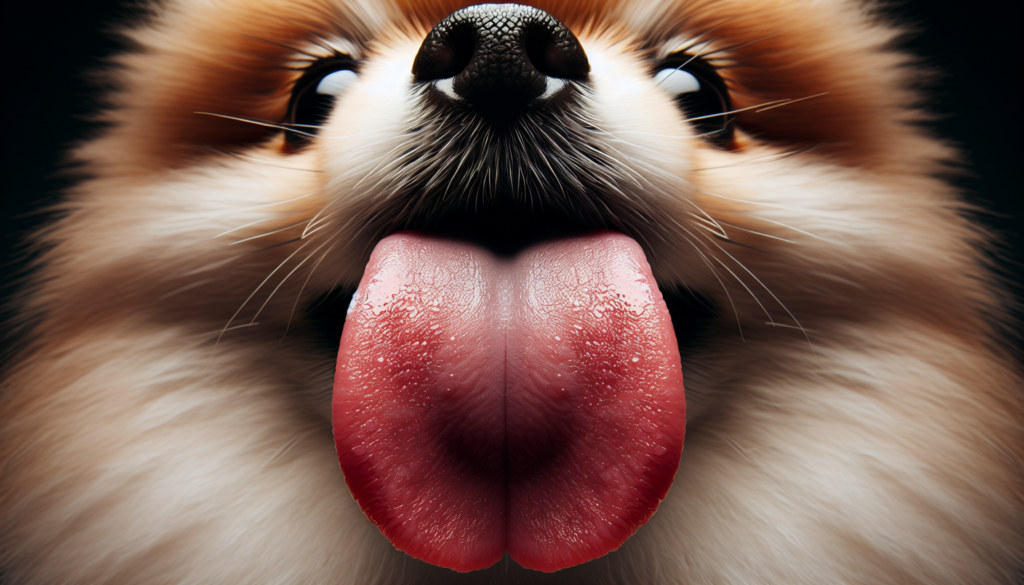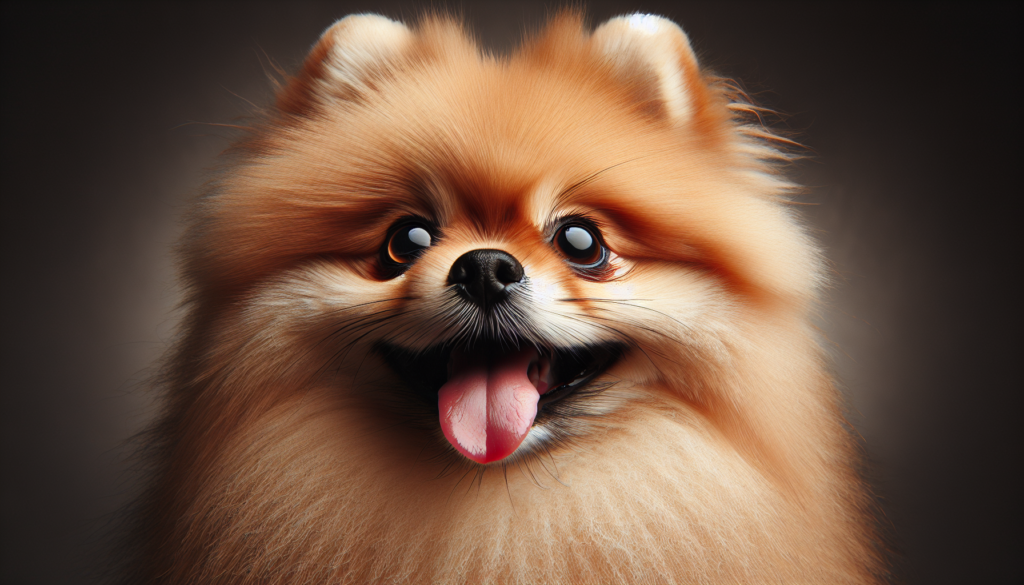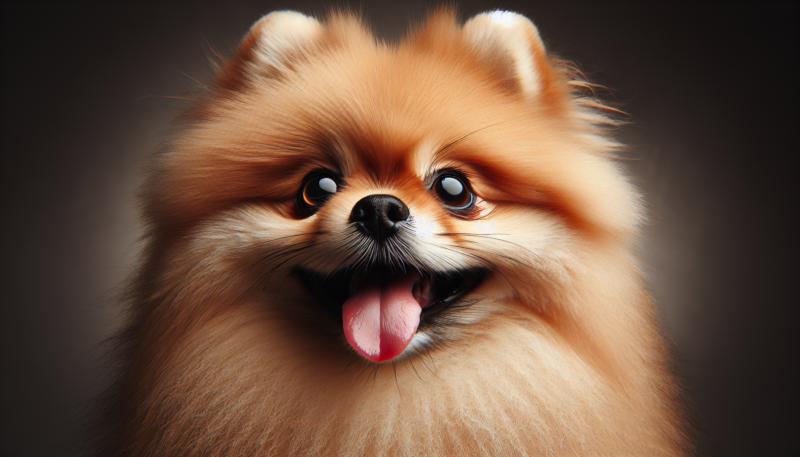Are you considering getting a Pomeranian as a pet but wondering if they are prone to drooling? Well, you’re in luck! In this article, we will explore the intriguing question of whether Pomeranians drool. We’ll delve into their unique characteristics and compare them to other dog breeds, such as the drool-heavy Great Dane. So, sit back, relax, and let’s find out if Pomeranians are little drooling machines or if they’re known for keeping their adorable little mouths nice and dry.

Why Pomeranians are Popular
Pomeranians have gained immense popularity among dog lovers all around the world, and there are several reasons contributing to their widespread appeal. From their cute appearance to their charming personality traits and adaptability, these compact and lovable canines have captured the hearts of many.
Cute Appearance
One of the primary reasons why Pomeranians are popular is their irresistibly cute appearance. These small dogs have a luxurious double coat that comes in a variety of colors, including orange, black, white, cream, and more. Their fluffy appearance, combined with their expressive eyes and perky ears, gives them an adorable teddy bear-like appearance that is simply captivating.
Personality Traits
Beyond their adorable looks, Pomeranians possess charming and endearing personality traits that make them even more lovable. These dogs are known for their intelligence, confidence, and loyalty towards their owners. They are often lively and enthusiastic, with a zest for life that is contagious. Pomeranians are also known to be social animals and can form strong bonds with their human family members, making them wonderful companions.
Adaptability
Pomeranians are highly adaptable dogs, which adds to their popularity. Despite their small size, they can thrive in various living situations, including apartments, suburban homes, or even rural environments. Their adaptability makes them suitable for families of all sizes, individuals, or even the elderly. Pomeranians can easily adjust to different routines and lifestyles, making them versatile and well-suited to a wide range of households.
Understanding Pomeranian Characteristics
To truly appreciate these charming canines, it is crucial to understand their specific characteristics. From their coat type and color to their size and weight, as well as their temperament, diving deeper into these traits will give you a better understanding of Pomeranians.
Coat Type and Color
Pomeranians have a double coat, which consists of a dense undercoat and a longer, harsher outer coat. This luxurious coat requires regular grooming to maintain its health and appearance. Pomeranian coats come in an array of colors, including orange, black, white, cream, blue, sable, and more. The variation in coat types and colors adds to the beauty and uniqueness of each Pomeranian.
Size and Weight
Pomeranians are considered a small toy breed, typically weighing between three to seven pounds when fully grown. They have a compact build with a well-proportioned body, giving them an appealing appearance. Despite their small size, Pomeranians often display a confident and bold attitude, never lacking in enthusiasm or energy.
Temperament
Pomeranians are known for their delightful temperament, which sets them apart from other breeds. They are intelligent and eager to please, making them relatively easy to train. Pomeranians also have a friendly and outgoing nature, often exhibiting a lively and perky disposition. They are social animals that enjoy being around their human family members, and their playful personality adds a delightful touch to any home.
Pomeranians’ Unique Anatomical Features
Beyond their physical appearance, Pomeranians possess several unique anatomical features that contribute to their distinct charm. From their muzzle and jaw structure to their salivary glands, tongue, and palate, exploring these elements sheds light on the fascinating biology of these beloved dogs.
Muzzle and Jaw Structure
Pomeranians have a relatively short and compact muzzle, which is one of their identifying features. Their jaws are strong and well-aligned, allowing them to chew and consume food effectively. This structure also enables Pomeranians to communicate through a range of vocalizations, from barking to yapping, showcasing their enthusiastic and expressive nature.
Salivary Glands
Salivary glands are important anatomical components in all dogs, including Pomeranians. These glands produce saliva, which lubricates the mouth and aids in the digestion of food. Pomeranians have a normal and functional salivary gland system, ensuring proper oral health and wellbeing.
Tongue and Palate
The tongue and palate of Pomeranians are well-designed for their size and serve essential functions within their oral cavity. Pomeranian tongues are relatively small but highly flexible, allowing them to efficiently lap up water or clean themselves. Their palate, which separates the oral and nasal cavities, helps regulate airflow during breathing, contributing to the unique sound of their barks and yips.
The Physiology of Drooling
Drooling, or the excessive production of saliva, is a natural bodily process in all animals, including dogs. While some breeds are notorious for their slobbering tendencies, others, like Pomeranians, tend to have minimal drooling. Understanding the physiology of drooling, the factors affecting it, and the prevalence of drooling in various dog breeds can help shed light on Pomeranian drooling habits.
Saliva Production
Saliva is produced by the salivary glands and plays a crucial role in the digestive process. It contains enzymes that aid in breaking down food, making it easier to swallow and digest. The volume of saliva produced varies between individuals and can be influenced by various factors, such as hydration levels, excitement, or the sight and smell of food.
Factors Affecting Drooling
Several factors can affect the amount of drooling a dog exhibits. Breeds with loose jowls or excessive skin, like the Saint Bernard or Bloodhound, tend to drool more due to the excess skin and slobber that accumulates. Furthermore, factors such as stress, anxiety, or the anticipation of food can also trigger increased drooling in dogs.
Prevalence of Drooling in Dog Breeds
While some dog breeds are renowned for their drooling tendencies, others, including Pomeranians, generally exhibit minimal drooling. Other small toy breeds, such as Chihuahuas and Shih Tzus, also fall into the category of low droolers. It is essential to recognize that drooling habits can vary even within the same breed, as individual dogs may have different levels of saliva production.

Drooling: Is it Normal for Pomeranians?
Pomeranians are known to be among the breeds that do not excessive drool. However, it is important to assess what is considered normal drooling for these small and lovable dogs. Understanding the factors that can influence Pomeranian drooling habits helps maintain a healthy balance and identify any potential issues.
Minimal Drooling
Pomeranians typically have minimal drooling, and some individuals may not drool at all. This is considered normal for the breed. Their smaller size, compact muzzle, and well-aligned jaws contribute to their drier mouths, resulting in minimal saliva production.
Factors Influencing Pomeranian Drooling
Although Pomeranians are generally not prone to excessive drooling, certain factors can influence their salivation levels. These factors may include excitement, eating habits, environmental conditions, stress, anxiety, or medical issues. It is important to monitor any changes in drooling behavior, as they can serve as indicators of potential health concerns.
Normal vs. Excessive Drooling
While minimal drooling is considered normal for Pomeranians, excessive drooling may indicate an underlying issue that requires attention. If your Pomeranian suddenly starts drooling excessively or exhibits a significant change in their drooling habits, it is essential to consult with a veterinarian to rule out any potential health issues.
Potential Health Issues Causing Excessive Drooling
Excessive drooling in Pomeranians can be a cause for concern and may point to underlying health issues that require attention. Several dental problems, oral infections, and inflammatory conditions can contribute to increased salivation levels. Identifying and addressing these issues promptly is crucial for maintaining your Pomeranian’s overall health and wellbeing.
Dental Problems
Dental problems, such as periodontal disease, tooth decay, or gum infections, can lead to excessive drooling in Pomeranians. These issues may cause pain and discomfort, prompting increased saliva production as a response. Regular dental care, including professional cleanings and daily brushing, can help prevent and manage dental problems.
Oral Infections
Infections of the mouth, such as oral yeast or bacterial infections, can cause increased salivation in Pomeranians. These infections may occur due to poor oral hygiene or an underlying immune system issue. Prompt veterinary treatment and proper oral care can help alleviate these infections and reduce drooling.
Inflammatory Conditions
Certain inflammatory conditions, such as oral ulcers or stomatitis, can result in excessive drooling in Pomeranians. These conditions can cause pain and discomfort, leading to increased saliva production as a protective response. Identifying and treating the underlying cause of inflammation is essential in managing drooling and improving your Pomeranian’s overall quality of life.
Managing Pomeranian Drooling
While minimal drooling is considered normal for Pomeranians, it is still important to actively manage their drooling habits to ensure their comfort and wellbeing. Employing dental care, proper nutrition, and sufficient hydration are key factors in managing drooling tendencies.
Regular Dental Care
Maintaining proper dental care is essential for preventing dental problems and subsequent excessive drooling in Pomeranians. Regular brushing with dog-specific toothpaste, professional dental cleanings as recommended by your veterinarian, and providing appropriate chew toys can help keep your Pomeranian’s teeth and gums healthy.
Proper Nutrition
Feeding your Pomeranian a balanced diet that meets their nutritional needs is crucial in managing drooling tendencies. Providing high-quality dog food and avoiding table scraps or food that may cause allergies or upset stomachs can contribute to their overall health and reduce the likelihood of excessive drooling.
Hydration
Ensuring your Pomeranian has access to fresh and clean water is important in managing drooling. Proper hydration helps maintain overall oral health and can reduce excessive saliva production. Additionally, keeping your Pomeranian cool during hot weather can also help prevent dehydration and potential drooling triggers.
Tips for Preventing Excessive Drooling
Prevention is always better than cure, and by taking proactive measures, you can potentially minimize the occurrence of excessive drooling in your Pomeranian. Focus on preventive dental hygiene, regular checkups and vaccinations, and being aware of potential allergies to prevent drooling-related issues.
Preventive Dental Hygiene
Establishing a regular dental care routine is key to preventing dental problems and minimizing drooling in Pomeranians. This includes daily brushing, dental rinses, appropriate chew toys, and annual or bi-annual professional cleanings. Regular dental care can help maintain oral health and reduce the chances of excessive drooling.
Vaccinations and Regular Checkups
Keeping up with your Pomeranian’s vaccinations and scheduling regular checkups with your veterinarian is essential in preventing oral infections, inflammatory conditions, or other health issues that may contribute to excessive drooling. Regular veterinary care enables early detection and timely treatment of any potential concerns.
Awareness of Allergies
Being aware of potential allergies that your Pomeranian may have is crucial in preventing reactions that could result in excessive drooling. Pay attention to any specific foods, environmental triggers, or contact allergens that may cause an allergic response, and take appropriate measures to avoid them.
When to Be Concerned: Red Flags for Pomeranian Owners
While minimal drooling is normal for Pomeranians, certain red flags should alert any responsible owner to seek veterinary attention. Sudden increases in drooling, behavioral changes, and excessive thirst are important signs that should not be ignored.
Sudden Increase in Drooling
If your Pomeranian suddenly starts drooling excessively without any apparent reason, it is essential to consult with a veterinarian. Sudden changes in drooling habits may indicate an underlying health issue that requires immediate attention and treatment.
Behavioral Changes
Unusual behavioral changes, such as decreased appetite, lethargy, increased agitation, or signs of pain, alongside excessive drooling, may suggest an underlying health problem. It is important to observe your Pomeranian’s behavior closely and seek veterinary advice if any concerning changes occur.
Excessive Thirst
Excessive thirst, also known as polydipsia, accompanied by increased drooling can be indicative of potential health issues. Pomeranians are generally not excessive drinkers, and significant changes in their drinking habits should not be overlooked. Consulting with a veterinarian can help identify and address any underlying problems.
Consulting a Veterinarian
If you notice any concerning changes or issues regarding your Pomeranian’s drooling habits, consulting with a veterinarian is crucial. Seeking professional advice, undergoing diagnostic tests, and exploring treatment options is essential in ensuring your Pomeranian’s health and wellbeing.
Importance of Professional Advice
Veterinarians are knowledgeable and experienced in identifying and addressing potential health concerns in dogs. Their expertise in evaluating drooling patterns, conducting thorough examinations, and providing appropriate guidance is vital in maintaining your Pomeranian’s oral health and overall quality of life.
Diagnostic Tests
When it comes to excessive drooling, veterinarians may recommend diagnostic tests to identify any underlying health issues. These tests may include blood work, dental examinations, X-rays, or microbiological cultures, depending on the suspected cause of excessive drooling.
Treatment Options
Upon identifying the cause of excessive drooling, veterinarians can recommend appropriate treatment options tailored to your Pomeranian’s specific needs. Treatment may involve dental interventions, medications, oral hygiene protocols, or lifestyle adjustments to manage and alleviate the underlying issue.
In conclusion, while Pomeranians are not known for excessive drooling, it is important for owners to understand the normal range of drooling behaviors for this breed. Recognizing potential red flags, managing preventive care, and seeking veterinary advice when necessary will help ensure that your Pomeranian remains happy, healthy, and free from any drooling-related issues.
